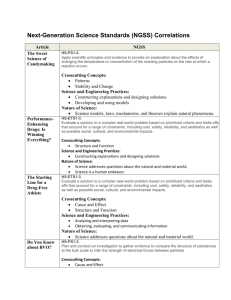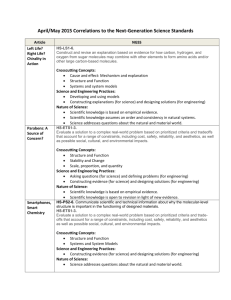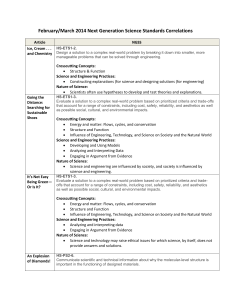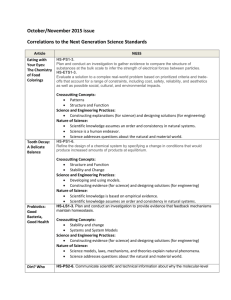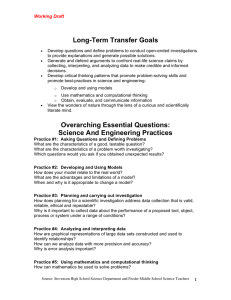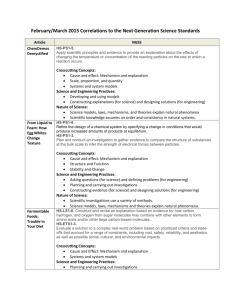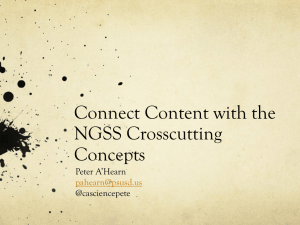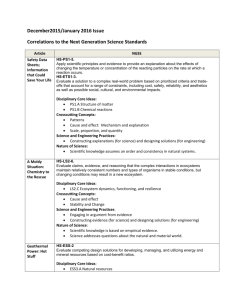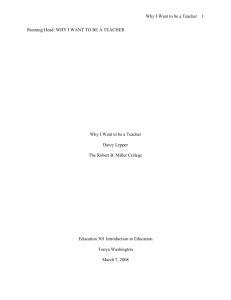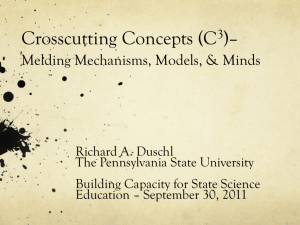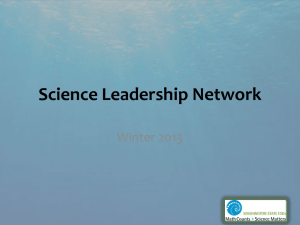October 2013 Next Generation Science Standards Correlations
advertisement
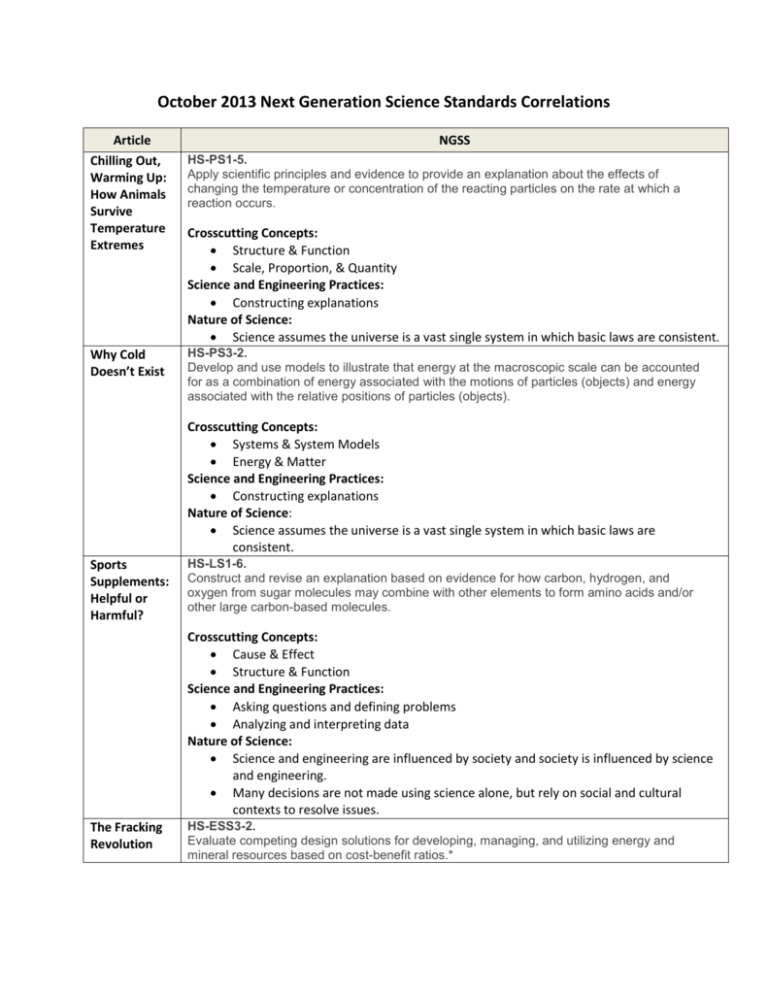
October 2013 Next Generation Science Standards Correlations Article NGSS Chilling Out, Warming Up: How Animals Survive Temperature Extremes HS-PS1-5. Apply scientific principles and evidence to provide an explanation about the effects of changing the temperature or concentration of the reacting particles on the rate at which a reaction occurs. Why Cold Doesn’t Exist HS-PS3-2. Develop and use models to illustrate that energy at the macroscopic scale can be accounted for as a combination of energy associated with the motions of particles (objects) and energy associated with the relative positions of particles (objects). Crosscutting Concepts: Structure & Function Scale, Proportion, & Quantity Science and Engineering Practices: Constructing explanations Nature of Science: Science assumes the universe is a vast single system in which basic laws are consistent. Crosscutting Concepts: Systems & System Models Energy & Matter Science and Engineering Practices: Constructing explanations Nature of Science: Science assumes the universe is a vast single system in which basic laws are consistent. Sports Supplements: Helpful or Harmful? HS-LS1-6. Construct and revise an explanation based on evidence for how carbon, hydrogen, and oxygen from sugar molecules may combine with other elements to form amino acids and/or other large carbon-based molecules. Crosscutting Concepts: Cause & Effect Structure & Function Science and Engineering Practices: Asking questions and defining problems Analyzing and interpreting data Nature of Science: Science and engineering are influenced by society and society is influenced by science and engineering. Many decisions are not made using science alone, but rely on social and cultural contexts to resolve issues. The Fracking Revolution HS-ESS3-2. Evaluate competing design solutions for developing, managing, and utilizing energy and mineral resources based on cost-benefit ratios.* HS-ETS1-3. Evaluate a solution to a complex real-world problem based on prioritized criteria and tradeoffs that account for a range of constraints, including cost, safety, reliability, and aesthetics as well as possible social, cultural, and environmental impacts. Crosscutting Concepts: Cause & Effect Stability & Change Science and Engineering Practices: Asking questions and defining problems Analyzing and interpreting data Nature of Science: Technological advances have influenced the progress of science and science has influenced advances in technology. Many decisions are not made using science alone, but rely on social and cultural contexts to resolve issues. Nuclear Fusion: The Next Energy Frontier? HS-PS1-8. Develop models to illustrate the changes in the composition of the nucleus of the atom and the energy released during the processes of fission, fusion, and radioactive decay. HS-ETS1-3. Evaluate a solution to a complex real-world problem based on prioritized criteria and tradeoffs that account for a range of constraints, including cost, safety, reliability, and aesthetics as well as possible social, cultural, and environmental impacts. Crosscutting Concept: Energy & Matter Science and Engineering Practices: Asking questions and defining problems Planning and carrying out investigations Nature of Science: Technological advances have influenced the progress of science and science has influenced advances in technology. Note: Common Core State Standards Connections for all articles: RST.9-10.1 Cite specific textual evidence to support analysis of science and technical texts, attending to the precise details of explanations or descriptions. RST 11-12.1 Cite specific textual evidence to support analysis of science and technical texts, attending to important distinctions the author makes and to any gaps or inconsistencies in the account. In addition, the teacher could assign writing to include the following Common Core State Standard: WHST.9-11.9 and WHST 11-12.9 Draw evidence from informational texts to support analysis, reflection, and research.
